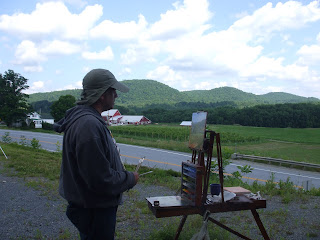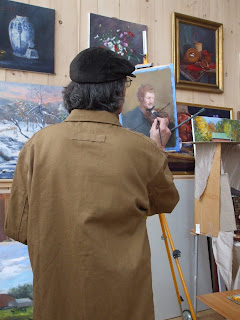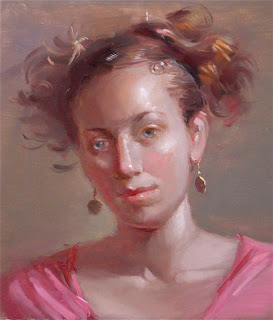




We got out early this morning, and Jack took me to a place that he had painted in early spring. The weeds were over my head, but we managed to get to the little brook with the view of Mt. Mansfield, the highest mountain in Vermont. The space was pretty limited. Jack had a large canvas, so he took his "big" easel.
This easel was owned by Thomas Curtin, who was a friend of my sister-in-law, and was an artist who had lived in Cambridge, VT. He had passed away in 1977. Before he died, he gave the easel to my sister-in-law to give to us. It is a Gloucester easel manufactured by Oscar Anderson, and it is a very ingenious invention. It is very simple, and Jack's paintbox and landscape palette fits nicely on the v-shape in the middle. The canvas is sits on pegs, and the top of the canvas is held by a stick.
Jack is working on linen with an oil priming, and it is 24"x30". He will go back several times to the same spot to finish the piece. This was just the start.
I am working on a small gessoed panel, and instead of getting in the big mountain, I decided to concentrate on the bank just across the brook. You can see that my landscape palette box is held onto my easel by a small bungie...works great!
Here is a close-up of my palette box. I need to fix it up a bit now. When I mix a fresh palette, I can keep it in the freezer, and this will keep the paint from drying out.



















































